Like the holistic system that is the human body, the arts also cannot be separated into discrete parts, but, instead, can be blended seamlessly into ever-emerging and stimulating works.
Young textile designer and artist Melody Hesaraky has quickly become recognised as building a bridge between the worlds of fashion, art and music and she strives to create atmosphere and magic through her patterns and prints.
Within her collections, Melody uses textures and motifs to bring out and modulate her designs. Combining high-end fabrics with bold and fresh manipulations, her constant and meticulous research goes hand in hand with her innate ambition and will to create something new and modern. She fell in love with textiles when she realised they were the perfect medium to communicate and share her experiences with audiences of different backgrounds.
Even as a textile designer she sometimes likes to address themes beyond the ambitions of fashion and during the covid-19 quarantine period, her expressive illustrations were published in the French fashion magazine, Factice.
From an early age, Melody immersed herself in art through drawing and painting. This impulse towards artistic creativity nurtured, deep inside her, a determination to work in the area of art and design.
She received her Bachelor in 3D Design and Craft with honours from University of Brighton, UK in 2014 and received her Masters in Textile Design for Fashion from the Academy of Art University in San Francisco in 2017.
In 2019 her work was published in over 20 magazines, including, Kaltblut Magazine, Vanity Teen, London, Vulkan Magazine and Huf Magazine. She was also chosen as the director’s pick of Online Studios at The Other Art Fair 2020 Brooklyn presented by Saatchi Art.
Melody started her own label, Melody Hes Studio, in February 2019 and has built a brand that applies multiculturalism to fashion, textiles, design and art.
In this article, Melody tells how she grew from childhood painter to international textile designer. She shares how she gets creative in her studio and encourages aspiring textile artists to be free, harness their imagination and push their personal boundaries.
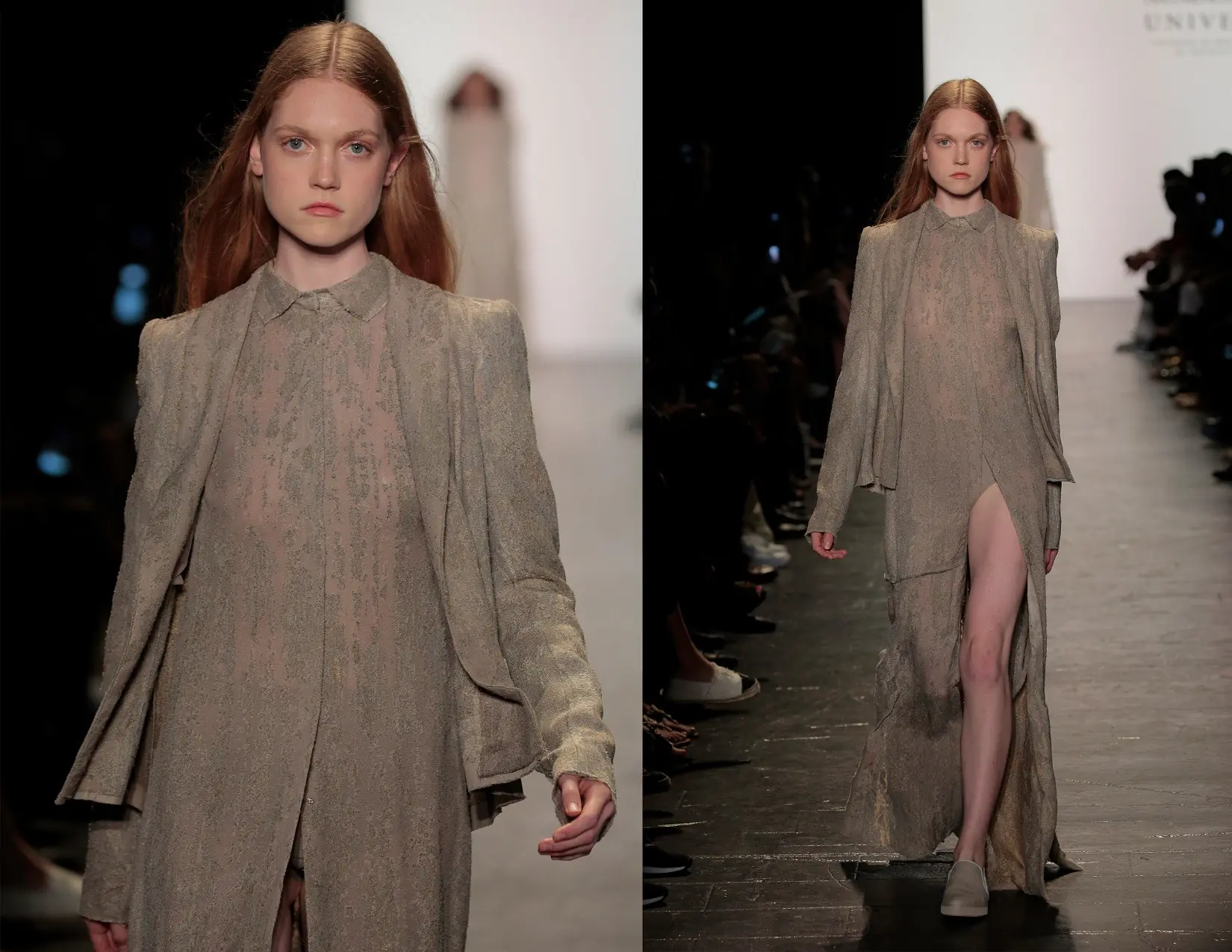
Storytelling through print and patterns
TextileArtist.org: What initially attracted you to textiles as a medium? How was your imagination captured?
Melody Hesaraky: From an early age I have been involved in art through drawing and painting. Sketchbooks, coloured pencils, markers and oil paints have always been a part of my life!
Having a penchant for painting as early as my childhood, I realised that my prospective career was likely to be connected to art and design. Growing up I continued to explore how I could pursue that path.
I started at the University of Brighton, UK in 2011 and in 2014 received my BA (Hons) 3D Design and Craft. During my design practice in my course I was able to explore working with different materials in spacious specialist workshops, developing material-specific skills in four areas: wood, metal, ceramics, polymers and composites. My studio practice was integrated with learning about research methods in creative practice and delivering skills in visual communication, design development and historical and critical studies as well.
Later on during my individual practice I had to focus on just two specific materials and I decided to work with metal and textiles. I’ve realized there is nothing like textiles to give life to the passion I have for storytelling through print and patterns. So I decided to combine different materials when designing objects, for example textiles and metal. I developed a major independent body of work in 3D design and craft using these two materials.
Beside print and pattern, the human body and its power have always fascinated me. It is so powerful when artists use the physical body as a medium to make art; for instance when performance artists express their distinctive views and make their voices heard in the political or social arena.
I did a lot of life drawing during my undergraduate degree and, before that, watched a lot of art performances, ballet performances and other kinds of dance and body movements. Textiles are a great material to put on the body because they can capture the movement. So the marriage of my curiosity and my favourite medium of textiles, along with my appreciation for the human body, led me on to study at a school of fashion.
In 2015 I started my Masters in Fine Art in Textile Design for Fashion at the Academy of Art University in San Francisco. Meanwhile, it was dawning on me that textile design – my area of specialism – is, indeed, a rich and challenging subject. I have also come to discover that it is of great importance in the fashion world. It can be as simple as something you put on to make yourself feel good, or as dynamic as something illustrative of culture, time and its transformations. I have always emphasised the importance of imagination and free expression in my work throughout my practice.
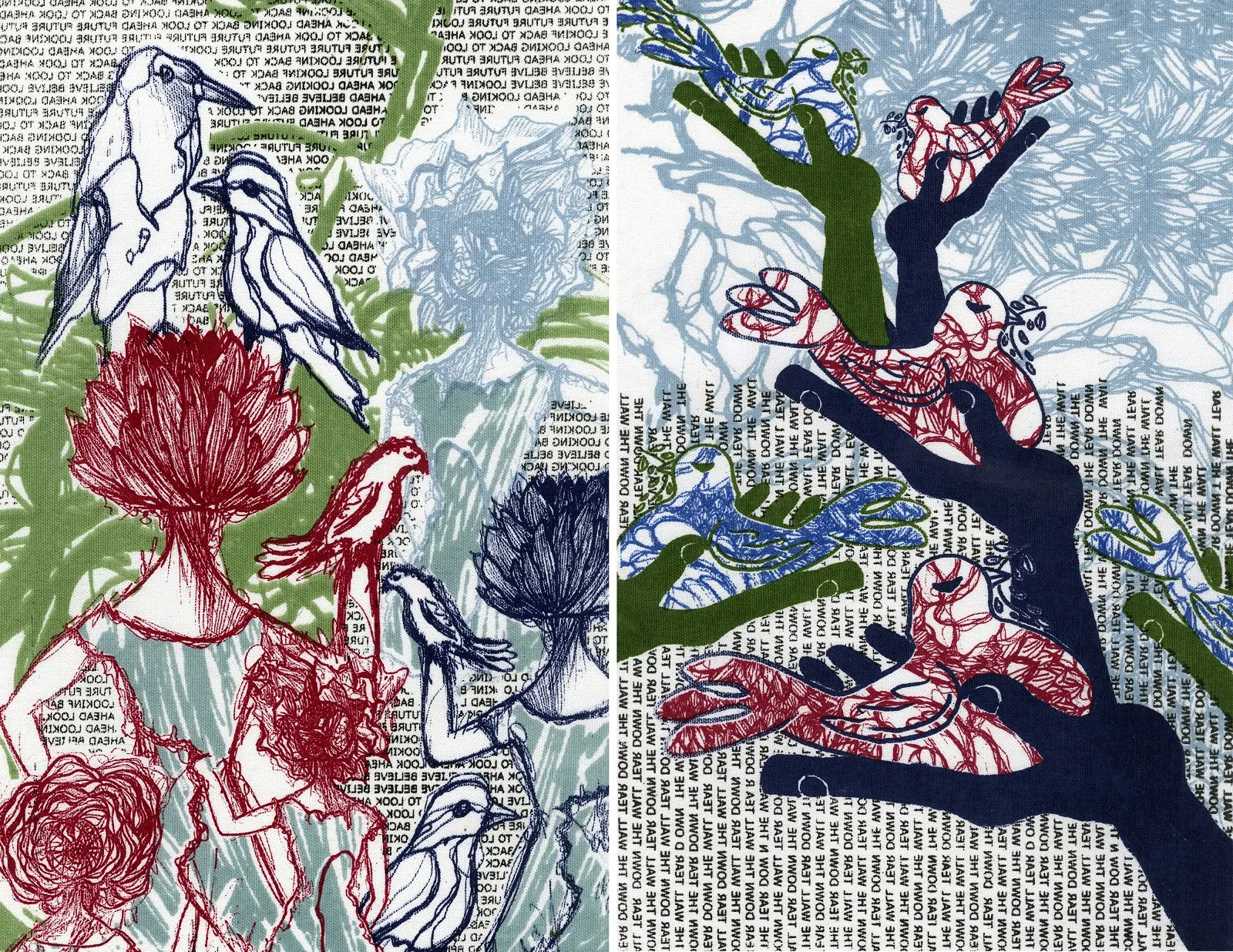
What or who were your early influences and how has your life/upbringing influenced your work?
I do remember that, when growing up, I had a great deal of freedom as a kid. My grandparents and my mother have been my biggest supporters since childhood. They were great storytellers and beautiful human beings. Books, poems and story telling were all a very important part of my childhood. I don’t really remember any stage of my life without them. I had all sorts of toys to play with but when given a piece of paper, my watercolours and brushes, it put me in the happiest place of all.
When I was 5 I used to tell my family that I wanted to become an artist. Back then I didn’t even know what that meant, but they always answered ‘yes, you will become an amazing artist’. They would frame my early sketches and put them on the wall. They’ve never tried to dictate anything to me. I’ve had all the freedom to become who I wanted to be. They’ve never had any judgments about what it meant to be successful and fulfilled – or otherwise! Instead, they were just there to give me wings to fly to wherever I wanted. And they allowed me to be the one to find the direction I wanted to follow. That was both freeing and challenging at the same time. I believe that their openness has pushed me to be more experimental and to find the path I wanted to be on.
I feel that, as an only child, I was better able to develop great relationships with adults and people older than me in general. As a kid I used to enjoy listening to the philosophical conversations of older people much more than talking to kids my own age. Another thing I really enjoyed doing was just to daydream all day long during the summer in our garden and then try to sketch out that dream, if that makes any sense. That sense of wonder as a six-year old stayed with me and I hope it stays with me in the future.
Going to museums, art galleries and exploring artists’ work have also been really important to me. It is something I really enjoy! Artists like Marina Abramovic, Salvador Dali or Picasso, who were pushing boundaries and breaking the rules of their eras, have always been very inspirational to me.
Growing up I have explored what I can contribute that is unique and how I can take that forward on my path. This ongoing exploration has been one of the most important priorities of my life.
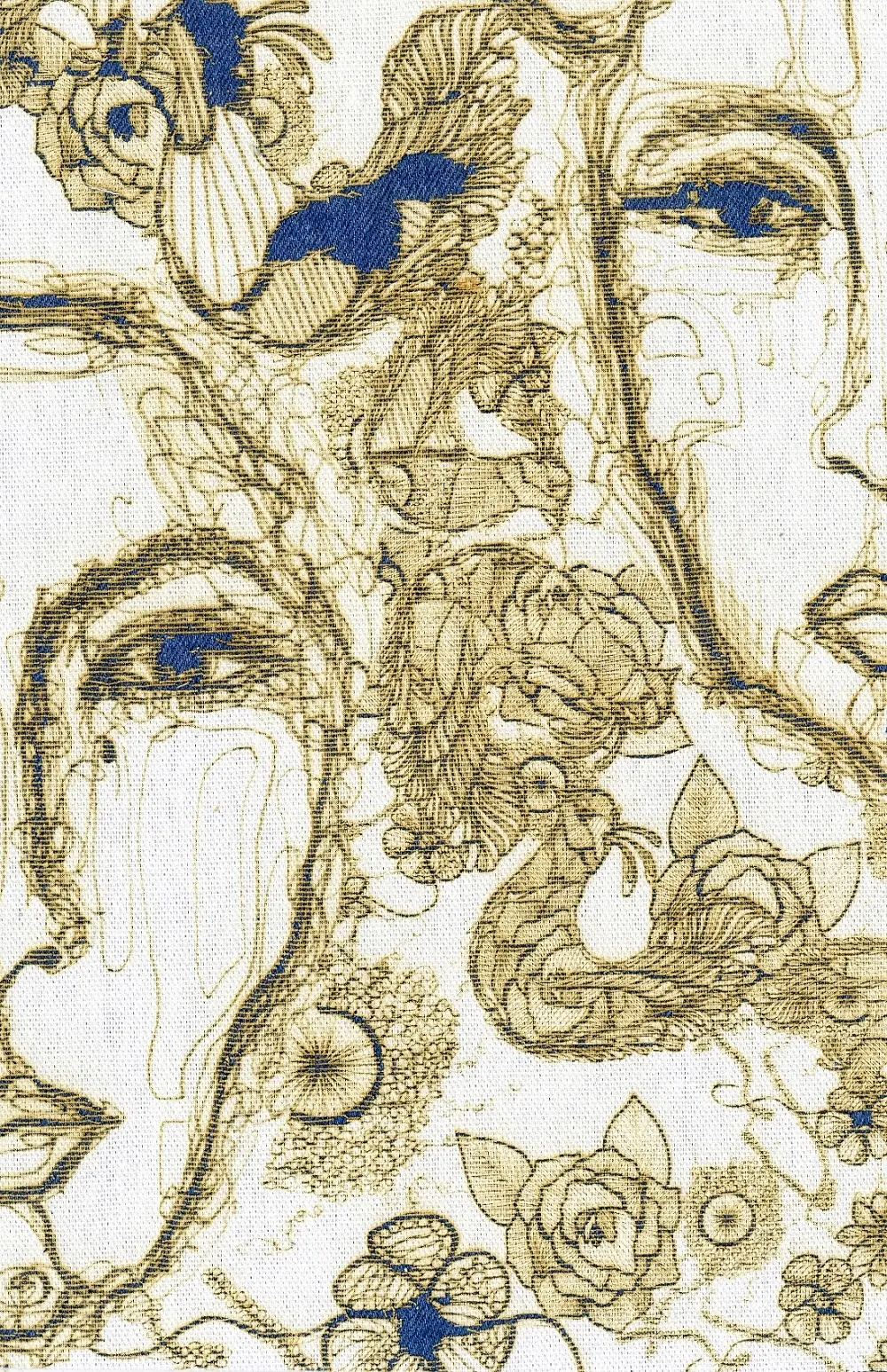
What was your route to becoming an artist?
Perhaps one of the most important things to me has been the development of my self expression and imagination. I have always enjoyed the act of self expression. There is a great pleasure in expressing thoughts, emotions or perceptions – real or imagined – through some form of art.
First, as a child there was a determination in me simply to paint. Later on, when I gained more experience, I realised that that’s just a very small part of being an artist. Having the skill set enables you to speak the language, for sure, but the next question is: what are you trying to say? I believe that the willingness to express and share with others what you are going through or experiencing makes you more of an artist. In my opinion, it is one of the most powerful forms of communication.
Drawing, for me, is an active meditation and being an artist is an ongoing and ever evolving path. I am always growing and it never stops. I have learned that, first, I have to grow as a human and gain a certain self awareness to be able to reflect on myself and then I’ll be able to share that with other people as a form of art.
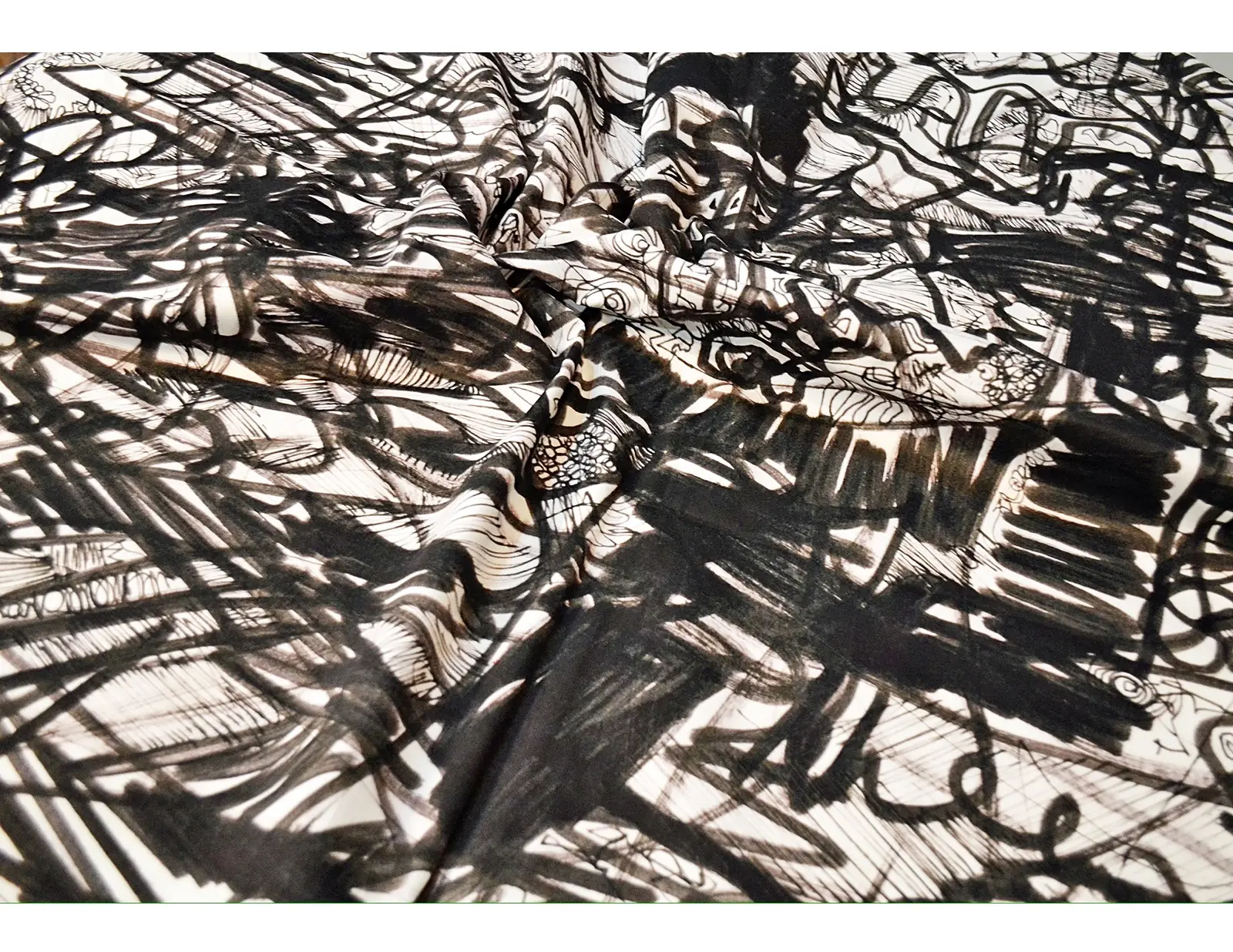
Experimental sketching to music
Tell us about your process from conception to creation
I try to surround myself with things that inspire me. Sometimes inspiration comes to me, and sometimes I need to seek it out. It can be a conversation with a stranger, visits to museums, art galleries and performances, or going and exploring unfamiliar places.
I’ve had to train myself to look, hunt and find those elements that are inspiring to me and that will ultimately help me to expand my artistic vision. Sometimes what I’m going through in my personal life becomes the story and mood of my work, and sometimes it is something totally abstract like just how I felt whilst attending a concert or a live performance.
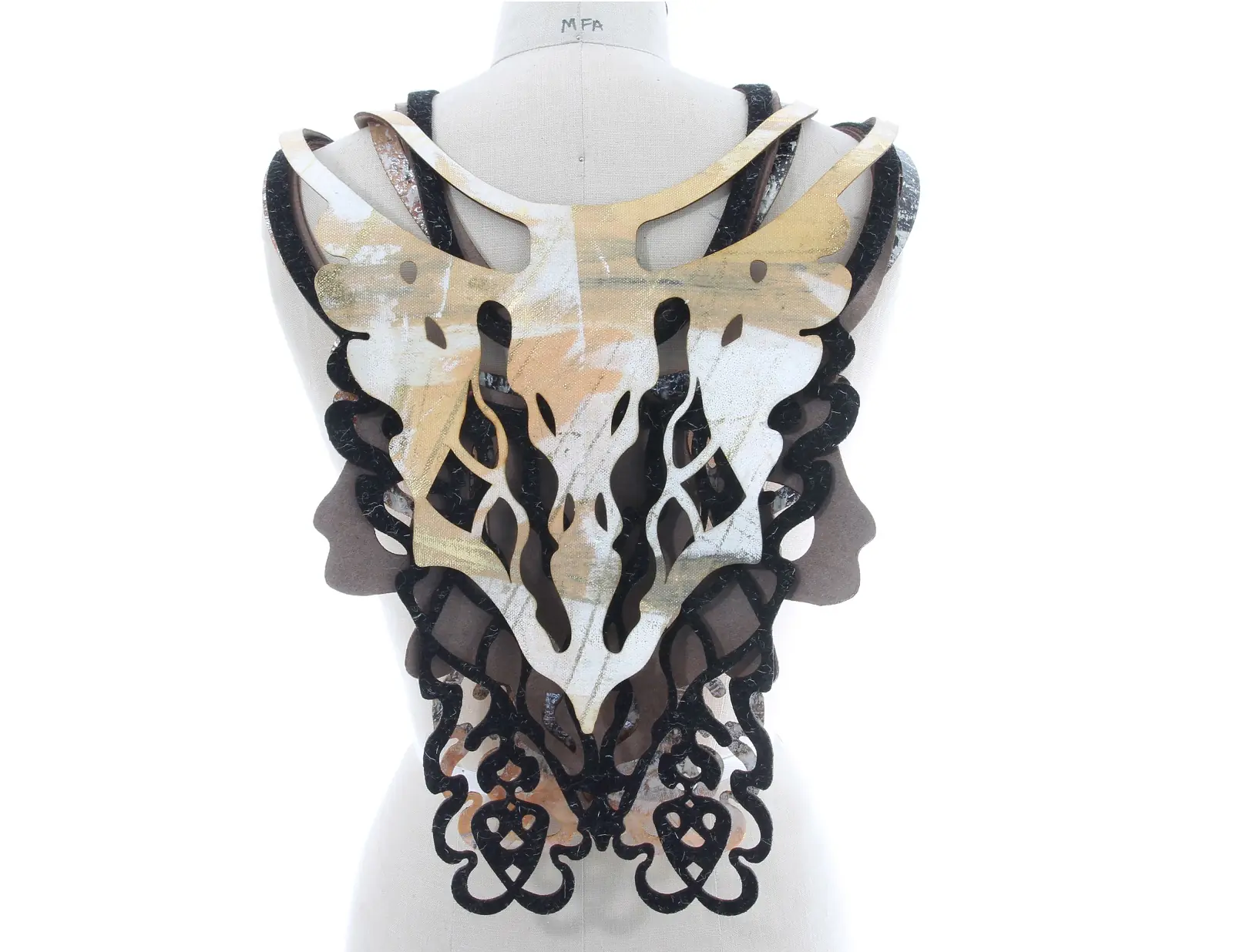
Tell us a bit about your chosen techniques and how you use them
I usually carry my sketchbook and camera wherever I go. Later, I’ll use those photos and sketches to create mood and pattern for my work.
Music, dance and body movement have always had a significant influence on me. Body is a good indicator and dancers understand that. To be creative you first need to ask a question. Then that question, or doubt, will lead to creativity. I always wonder why different types of sound and music create different movement? What is the relationship with physicality, space and sound? How can I adapt that to my work? What if I do the same movement with the same sound in a different space? And, what if, later on, for me that space became my sketch book?!
For instance, when I listen to classical music, the way I move my hand on the paper to sketch is very different compared to when I listen to techno. Then, one experiment will lead to another. I remember I attended the Inferno performance by Louis-Philippe Demers and Bill Vorn at the Gray Area Festival in San Francisco. During the experience, participants were strapped into mechanical exoskeletons that moved their bodies. The choreography produced unexpected and involuntary movements. Shifting the command from artist to computer and the role of audience to performer, Inferno questions the nature of control and agency in the landscape of technology and performance today.
I have tried to apply that to the way I draw my lines and let the rhythm of the music lead my line qualities and hand movement. I tried to move my hands and draw the lines like a robot as well. I’m always experimental with my chosen techniques and the process is more important to me than rushing into the final result. Sometimes it takes a long time to get the result that I’m looking for and I have to be patient.
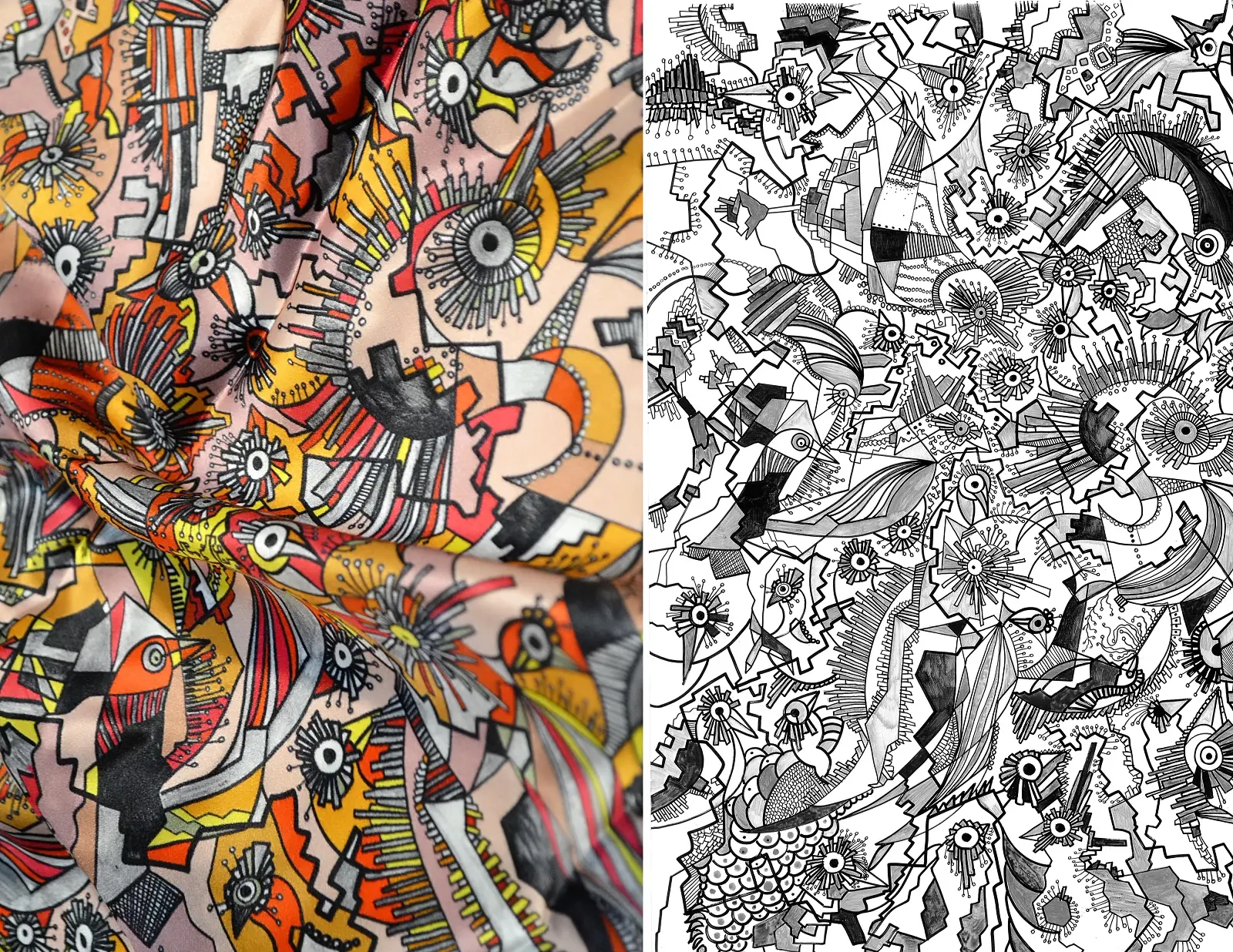
What currently inspires you?
Music, sound and body movement have so much influence on my visual work. They are so inspiring to me. I started exploring the idea of connecting those two passions of mine – music and visual art!
When I go to different music venues with a sketchbook, each time it surprises me how the work I create is different, depending on the mood and the type of sound and the energy in general. It helps me to progress through the process of developing new ideas. Sometimes it is not about what I want to draw but what can I imagine between the lines that had no meanings! And beside that, of course, what we’ve all been going through, being in quarantine because of COVID-19. At first I was shocked. You can see the series of illustrations (POSTPONED) I did for a French magazine during the first few days of quarantine: facticemagazine.com/postponed.
And now I am trying to learn something from this situation everyday! It seems like nature is forcing us to pause and reflect on some of our deepest fears and uncertainties. I think this is an opportunity to start asking some profound questions about ourselves and humanity.
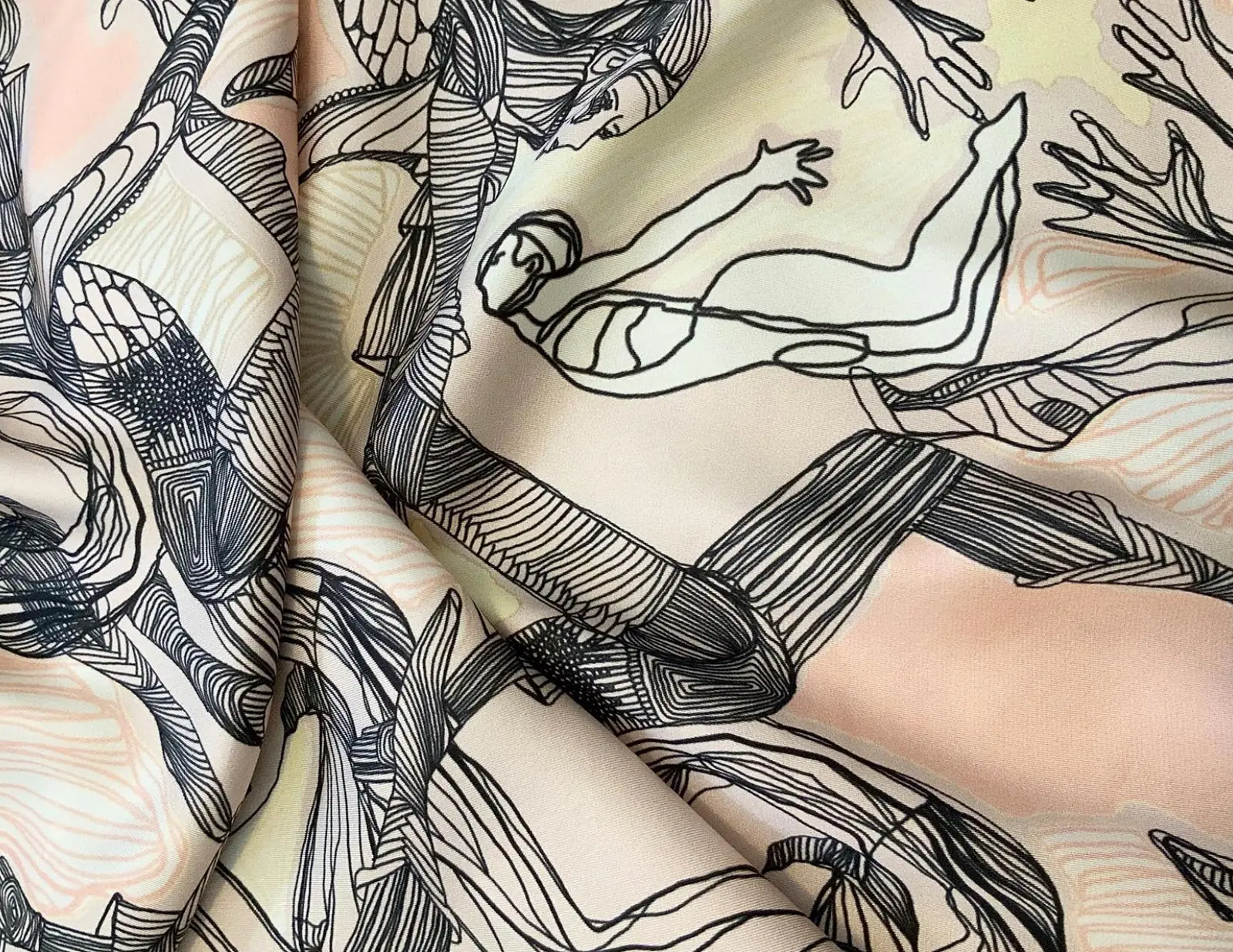
Stepping towards fear
Tell us about a piece of your work that holds particularly fond memories and why?
To be honest I feel some sort of connection with most of my pieces and it is difficult to pick one. But something that is coming to mind now is one of the first pieces I designed for my own label, Melody Hes Studio.
It was a silk scarf inspired by a ballet performance at the San Francisco Ballet. I love that piece because it’s a piece of wearable fine art. I remember that one of my really good friends bought that for her mother’s birthday and she loved it! She was travelling from Paris to South Africa; she was wearing that scarf and it was a great feeling to see the pictures of my scarf travelling the world with her.
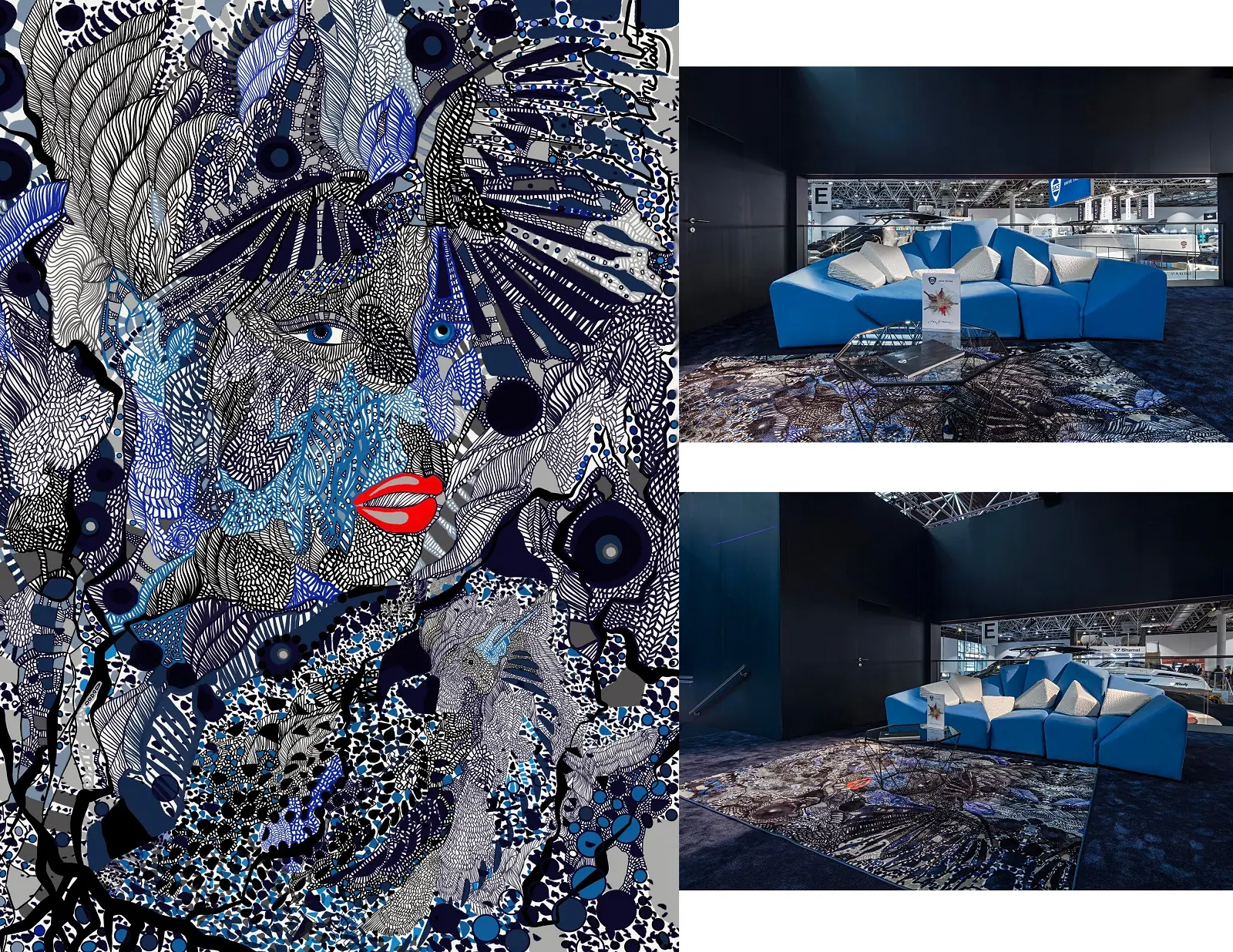
How has your work developed since you began and how do you see it evolving in the future?
There is so much good art out there! Ever since the moment I entered university that was very clear to me! And I immediately knew that, if I want to say something, I had better be myself! It has been a slow process of finding my own voice and growing in that, but it’s worth it.
Design is communication and art is expression and my work is both! It has been such a long journey to track back. I started to draw when I was 5 and I still remember those drawings from my childhood. I feel fortunate to have journeyed through my design practice at university and am now able to connect my passions of music, art and textiles.
It seems like my work is evolving at the same time as I evolve as a human. The more I let the fear of the unknown go and let the new in, the more surprised I become with the result. Fear sometimes tells us to stop when exploring a new idea. Yet when we feel fear, if we take even one small step closer towards it, rather than yielding to our habitual pulling away, we move one step closer to the vast mind that lies beyond. I try to create daily opportunities for growth for myself and others. I enjoy collaborating with other creatives and even areas like science and technology fascinate me. I believe that this openness will open more doors to the growth of my work.
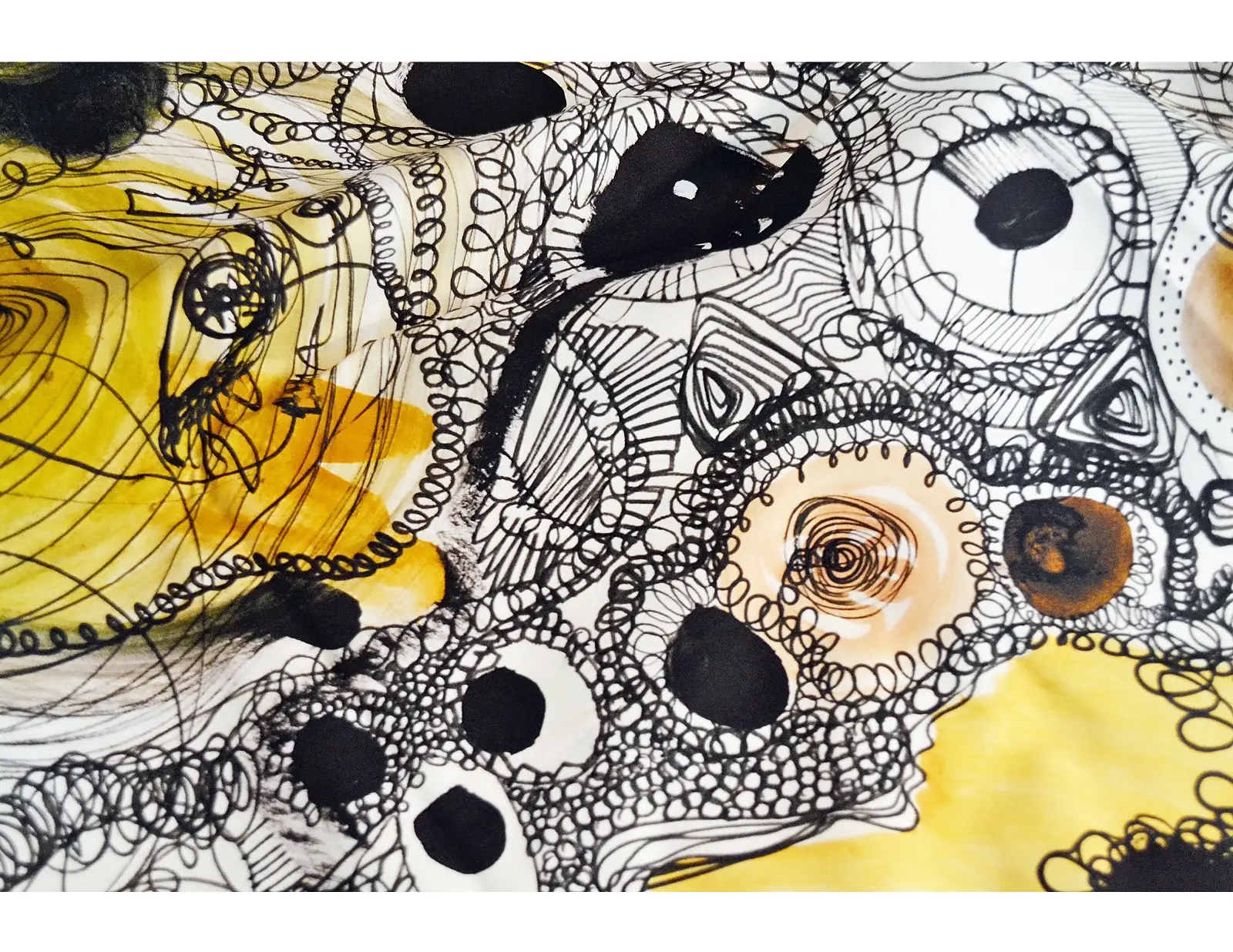
What advice would you give to an aspiring textile artist?
Find your own voice!
It is not easy but once you find it you can’t be anything else but YOU! Sometimes you have to make a way, even when there appears to be no way. Look carefully! Look without filters and see through your thoughts. Know that sometimes you need to slow down and pay attention – and then you’ll see.
It is alright to be confused. Push the boundaries and move forward.
For more information visit www.melodyhesaraky.com/
We’d love to hear what you think about Melody’s story. Please let us know in the comments below.
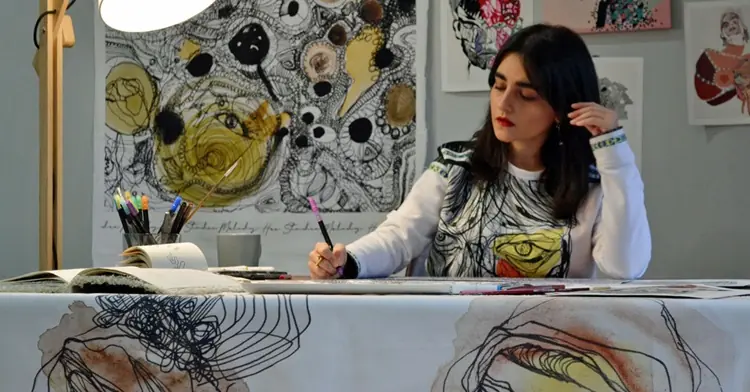
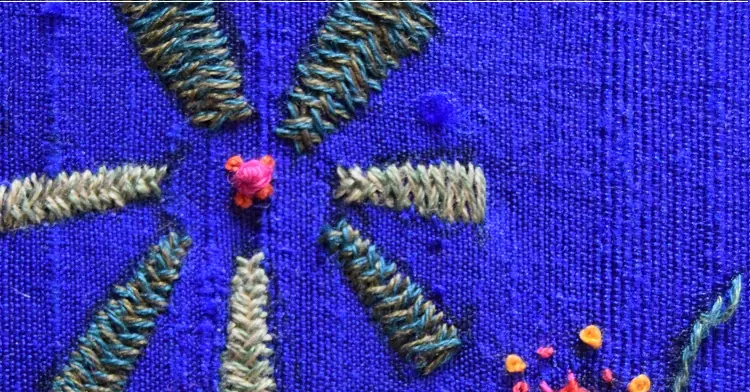
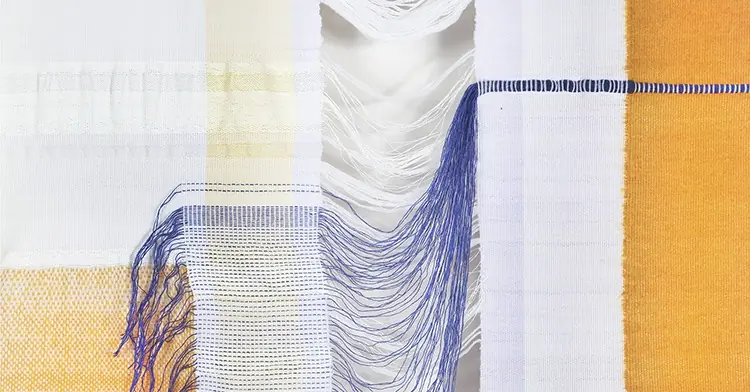
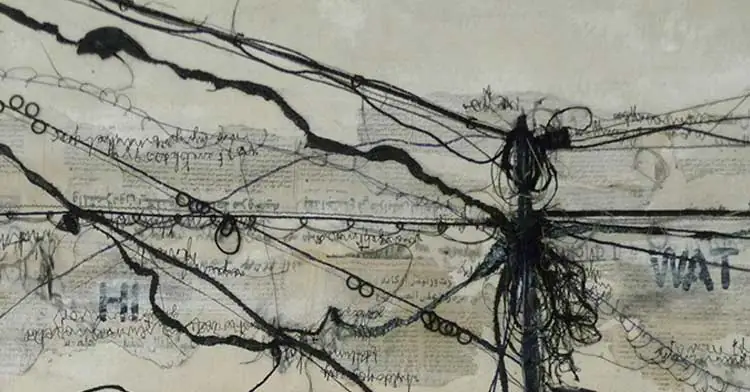
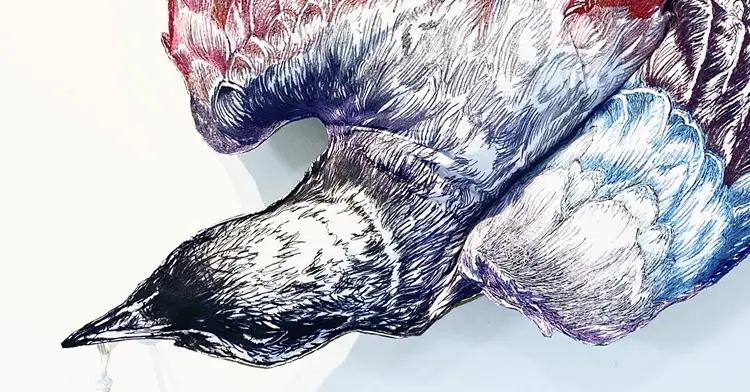
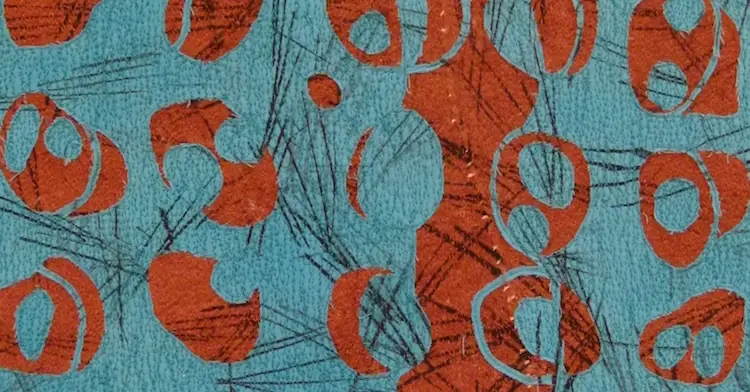
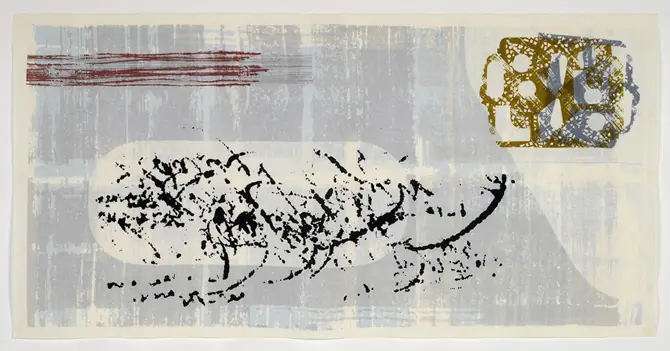
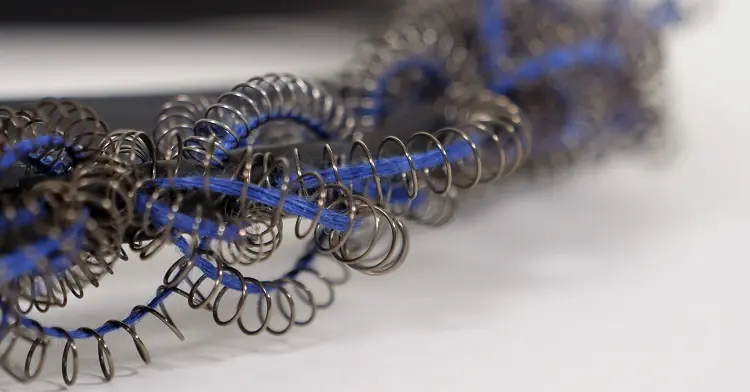
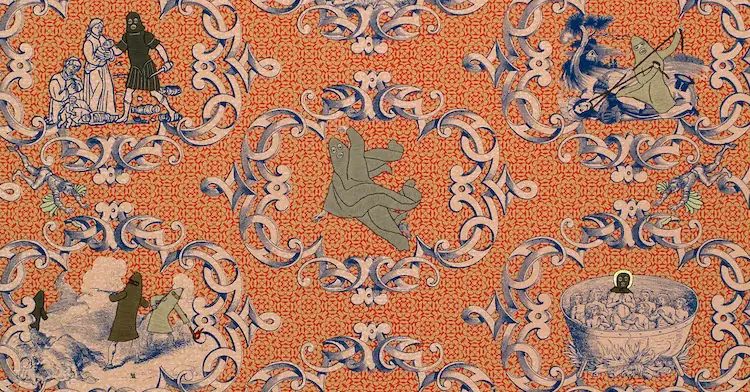
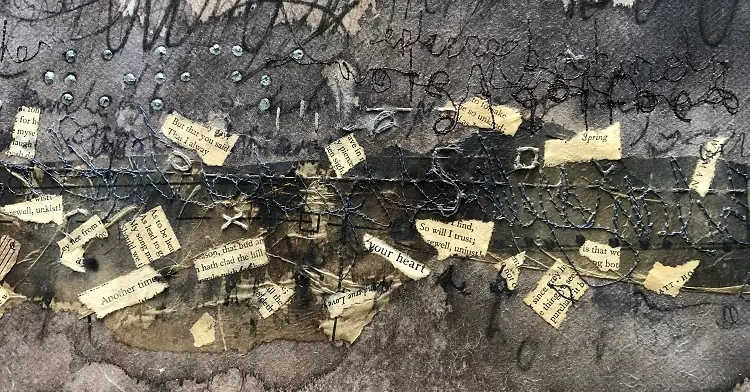
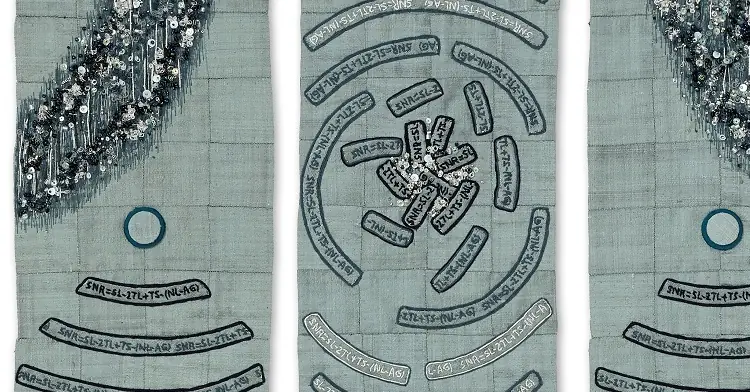
10 comments
Anna Ungaro
Very inspiring
Melody
Thanks Anna!
rose
i wish i had the confidence to draw with such freedom and yet control.!
i have a box of various pencils and maybe i will read through Melody’s words a few more times and that will spur me on. i hope so as the only thing that hold me back…is me!!!
Melody
Hi Rose,
I’m so glad that you’ve found my words inspiring!
Create and enjoy the journey! x
Alison pearce
Thank you Melody for sharing your story, it is truly inspiring and gives me lots to think about on my own creative journey.
Melody
My pleasure Alison!
Carol B
I have found Melody’s words and work truly inspirational. In my own way I feel I can now try to express my own fears and hopes for life after lockdown through my love of textiles.
Melody
So delighted to hear that Carol! I am sure that you’ll create something fantastic!
Karin Greenwood
Stunning work and deigns!!!
Melody
Thanks Karin! I’m so glad that you like my designs!